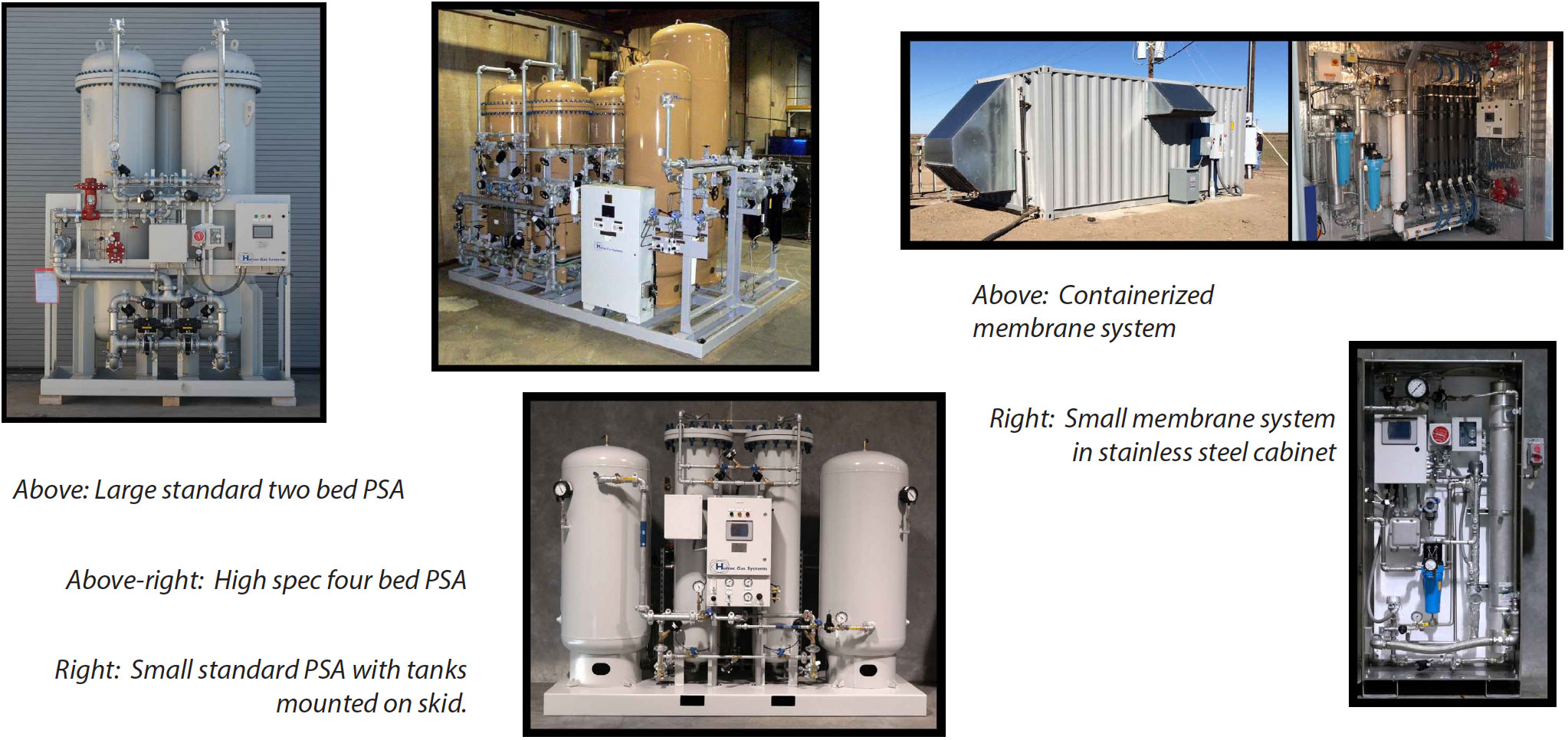Choose a different country or region to see the content specific to your location
Select Your Country/Region
Current Region:
 Global (EN)
Global (EN)
How can we help you?
Where cost and efficiency are the prime factors, PSA systems are almost universally the technology of choice. Even when these two decision drivers do not apply, at purities above 99.9%, PSA is the only choice for a gaseous nitrogen generator.
As illustrated in the graph to the right, where capacity or purity requirements are moderate, membrane systems may be an attractive technology when considering both initial investment and cost of operation. Small membrane systems involve fewer parts and assembly and therefore may be less costly to purchase.
However, membrane media is more costly than the CMS used in a PSA. Additionally, as purity increases, the compressed air requirement will rise faster for a membrane system than it will for a PSA. Therefore, as capacity and purity increase, PSA technology overtakes as the most cost effective option.

However, in applications where simplicity is more important than cost, membrane systems may be chosen even for larger nitrogen demands or higher purity. For example, in very remote locations where it is difficult for service personnel to reach (such as an oil platform), membrane systems are often chosen even though they are more costly to operate.

| TOPIC | MEMBRANE | PRESSURE-SWING ABSORPTION PSA |
|---|---|---|
| Purity Range | Effective at purities up to 99.9% (Max 0.1 % 02 content). | Effective at purities up to 99.9995% (Max 5 ppm 02) |
| Capacity vs. Purity | Capacity reduced significantly as purity requirement increases. | Capacity reduced gradually as purity requirement increases. |
| Feed Air/Operating Cost | Nearly equal in efficiency to PSA technology at purities near 95%. However, efficiency reduced significantly at higher purities. | SignifiGJntly more efficient than membrane technology when nitrogen purity exceeds 95%. As purity increases, the difference in efficiency becomes more significant. |
| Water Sensitivity | Water liquid or vapor will not damage a membrane separator, but capacity will be temporarily reduced if liquid water enters. Once the membrane dries, capacity is restored. | PSA Systems require dry air, typically < 38’F (3’C) dew point. Carbon Molecular Sieve (CMS) is sensitive to higher moisture concentrations and capacity will decrease if exposed. Permanently damage may occur. |
| Oil Sensitivity | Contamination with oil will cause permanent and irreversible decline in performance. | Contamination with oil will cause permanent and irreversible decline in performance. |
| Useable Life | The membrane film gets denser over time, a process called aging. Capacity is reduced most during the first 1-2 years of life. Reasonable performance should continue even after 10+ years if filtration is inspected, maintained. and replaced per manufacturer specification. | CMS performance does not decline with time, only with contamination. It is therefore possible to retain full performance even after 10+ years, if proper |
| Moving Parts | Feed isolation valve opens and closes to start and stop the nitrogen generator. This can be done manually, as needed, or it can be automated to start and stop on demand. | Typically eight automated On/Off valves are used to direct compressed air flow into the online or regenerating adsorber, to release product nitrogen, to equalize pressure, and allow waste to exit through a silencer. The PSA will start and stop automatically on demand. |